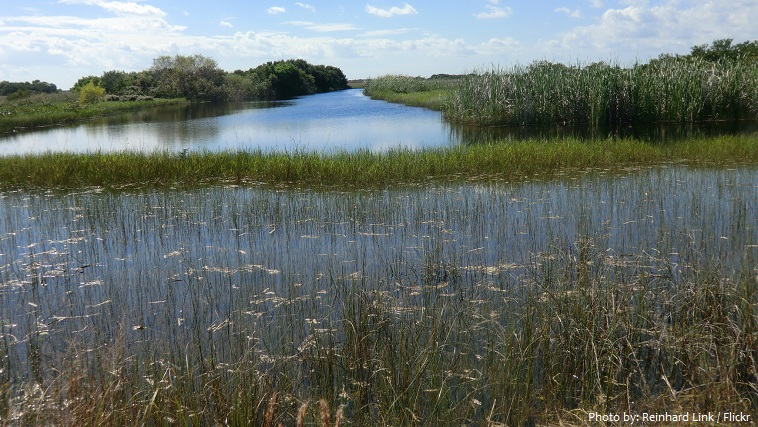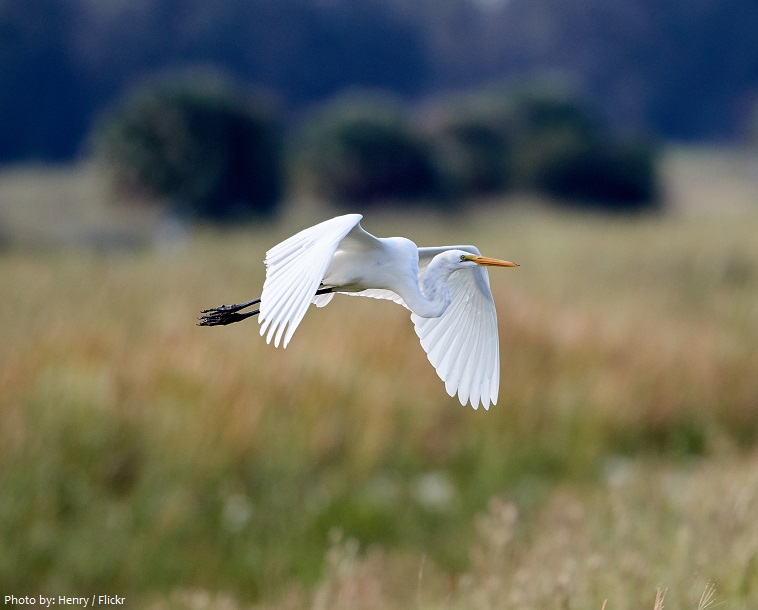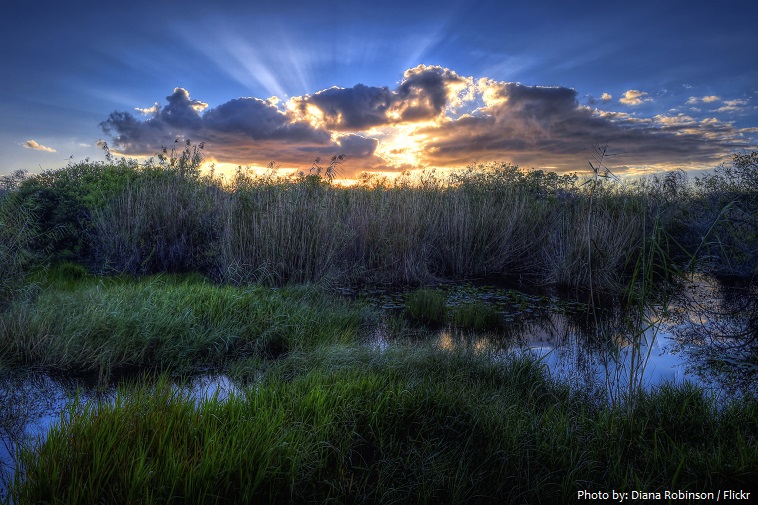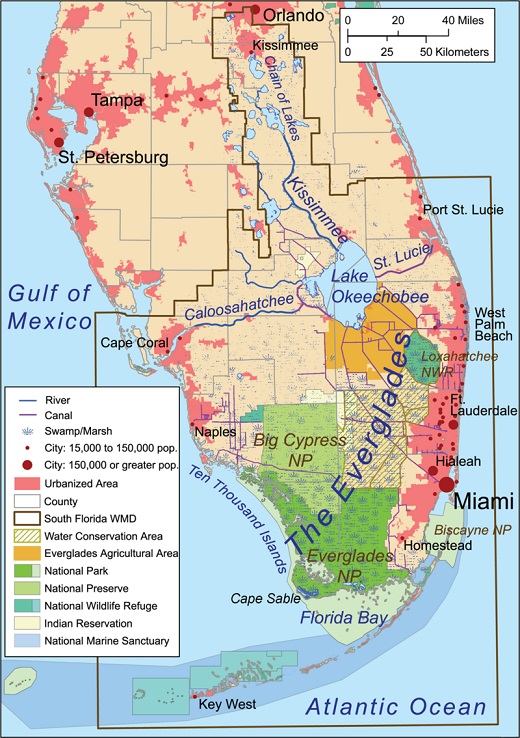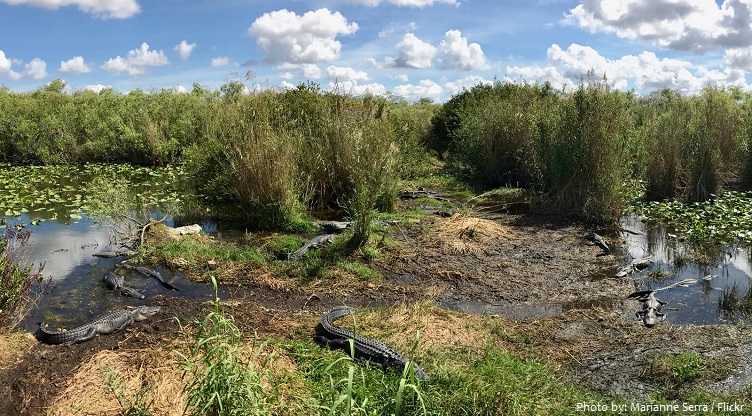The Everglades is a subtropical marshland located in the southern portion of the U.S. State of Florida.
The geography of the area is typical of a tropical river delta running slowly through a low-lying basin near sea level.
The Everglades is about 160 kilometers (100 miles) long and 100 km (60 miles) wide. It spans from Lake Okeechobee to Florida Bay and is often referred to as the “true Everglades” or just “the Glades.”
The region covers more than 11,100 square kilometers (4,300 square miles).
Water leaving Lake Okeechobee in the wet season forms the Everglades.
The Seminole Tribe gave the large body of water the name Okeechobee meaning “River of Grass” to describe the sawgrass marshes, part of a complex system of interdependent ecosystems that include cypress swamps, the estuarine mangrove forests of the Ten Thousand Islands, tropical hardwood hammocks, pine rockland, and the marine environment of Florida Bay.
The underlying bedrock or limestone of the Everglades basin affects the hydroperiod, or how long an area within the region stays flooded throughout the year.
Fire is an important element in the natural maintenance of the Everglades. The majority of fires are caused by lightning strikes from thunderstorms during the wet season. Their effects are largely superficial, and serve to foster specific plant growth: sawgrass will burn above water, but the roots are preserved underneath.
The Everglades experience a wide range of weather patterns, from frequent flooding in the wet season to drought in the dry season.
Humans have lived for thousands of years in or around the Everglades.
Before European colonization, the region was dominated by the native Calusa and Tequesta tribes.
The area was featured on maps for decades without having been explored. Writer John Grant Forbes stated in 1811, “The Indians represent as impenetrable; and the surveyors, wreckers, and coasters, had not the means of exploring beyond the borders of the sea coast, and the mouths of rivers.”
The waterways are inhabited by otters, manatees, alligators, and crocodiles. Everglades National Park is the only place in the world where alligators and crocodiles coexist naturally. About 45 species of mammals including deer, raccoon, and the severely endangered Florida panther are found here. Also about 50 species of reptiles and 300 species of fresh and saltwater fish.
There are nearly 350 species of birds recorded in the Everglades, both temperate and tropical. Specialties of the park include the short-tailed hawk and smooth-billed ani, and the Caribbean flamingo at its only regular North American mainland site, usually near the town of Flamingo.
It is the only place in the world that crocodiles and alligators live together.
In Everglades National Park, agents removed more than 2,000 Burmese pythons from the park as of 2017. Federal authorities banned four species of exotic snakes, including the Burmese python, in 2012. The pythons are believed to be responsible for drastic decreases in the populations of some mammals within the park.
Over 1,000 species of plants live here, many endemic to the area.
The Everglades is the largest tropical wilderness, the largest wilderness of any kind east of the Mississippi River, and is visited on average by one million people each year.
Everglades National Park protects the southern 20 percent of the Everglades. The park was established in 1934, to protect the quickly vanishing Everglades. The park was listed as a UNESCO World Heritage Site on October 24, 1979, and as a wetland of international importance on June 4, 1987.
Everglades National Park is the third-largest national park in the lower 48 states after Death Valley and Yellowstone.
Camping is available year-round in Everglades National Park.

